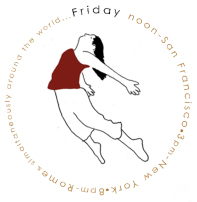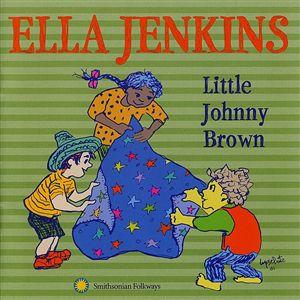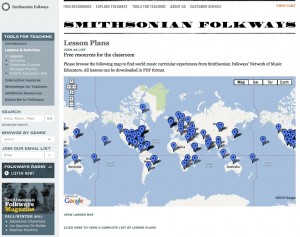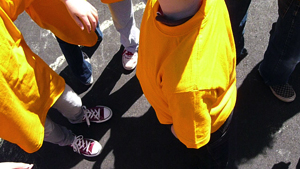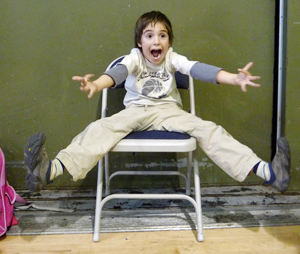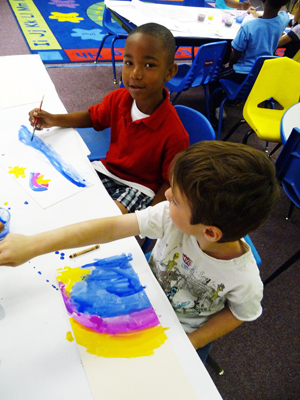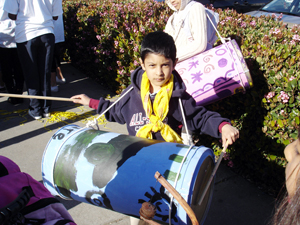Little Johnny Brown is a sharecropper song with gestures. I know classroom teachers who have used it to integrate arts education into their curriculum. Searching for support material for this inquiry has taken me to some marvelous, free resources that I encourage you to explore further if you have not already.
Smithsonian Folkways is an excellent resource for music – click on folkways radio and listen now anytime. Search their collection and order a 99cent mp3 of Little Johnny Brown being sung by Ella Jenkins recorded in 1991 with young students in Chicago singing, clapping and playing their kazoos. Fantastic.
Then find tools for teaching in the left sidebar. It is an incredibly valuable resource for music and sounds from around the world. Click lessons and activities and find their fantastic interactive map that allows you to find content linked to a specific region.
Don’t hesitate to use iTunes U to download free lesson plans, videos, and activities. This is the best new way to sneak past school internet filters to bring resources to your students in an organized and only occasionally glitchy way.
This exciting content has me digressing… Back to Johnny Brown the following links will take you to the best resources I have found:
Dancing Threads from KET, The Kentucky Network
Little Johnny Brown Music and Motions Paula Larke and Anndrena Belcher introduce a unit of study excerpted
Little Johnny Brown reveals a particular relationship between the individual and the group that I believe is much needed in contemporary culture. It is the meeting point of the two important goals I communicate to my students:
1. “Blend in—align yourself with the group energy and become part of a greater whole.”
2. “Stand out—express yourself as a unique individual with something to contribute.”
The Story of Little Johnny Brown
Though small in stature, Little Johnny Brown felt big and important because he was so good at picking cotton. He was mighty proud to lift his heavy bags onto the scale so everyone could see how much he’d picked. And he was mighty angry when the boss told him his bag weighed only 20 pounds when Johnny knew it weighed 50.
Determined to get back at the boss, Johnny began tossing bricks and stones and dead animals and whatever else he found into the sack with the cotton. If the boss cheated Johnny, Johnny would cheat the boss in return. When Johnny’s mother got wind of the scheme, she told him to lay his blanket down on the ground and pour out the contents of his cotton sack so she could have a look. She was not pleased. She explained to him that while the man might cheat Johnny
out of his money, no one could cheat Johnny out of his soul. If he maintained his own sense of values, he would grow up to be an honest man—and a better man than the boss who stole.
Images in the Song
To “lay your blanket down” doesn’t just refer to the story of Little Johnny Brown. It also means to show your true self to your partner.
“Lope like a buzzard” gives the dancers a chance to cut loose and have a little fun. At the same time, it gives the lead dancer a chance to see whether his partner will go along and imitate his actions for the fun of it, or look down her nose and give it only half a try.
The image of loping like a buzzard also refers to a tradition dating back to the days of slavery. Sometimes a slave would die in the field and get dragged off to the side so as not to slow down the work. At the end of the day, the other slaves would find their friend and perform a dance with the motions of a buzzard, escorting their friend’s spirit as it soared up to heaven.
Make a blanket or scarf
Students can design and create ‘blankets’ to use in the dance. Possible methods include tie dyeing, simple weaving, block printing, etc. Have students learn about indigo, which was grown on the Sea Islands and along the coastal mainland (and was the original dye for blue jeans!). Students may wish to color their blankets using indigo-colored dye.
After the dance
Display individual scarves connected in a quilt like display. Ask students to reflect upon the dance and the story the dance tells. Have they ever acted to ‘get even’? Can they come up with a slogan for a poster that connects with a message of injustice?

 Sign In
Sign In